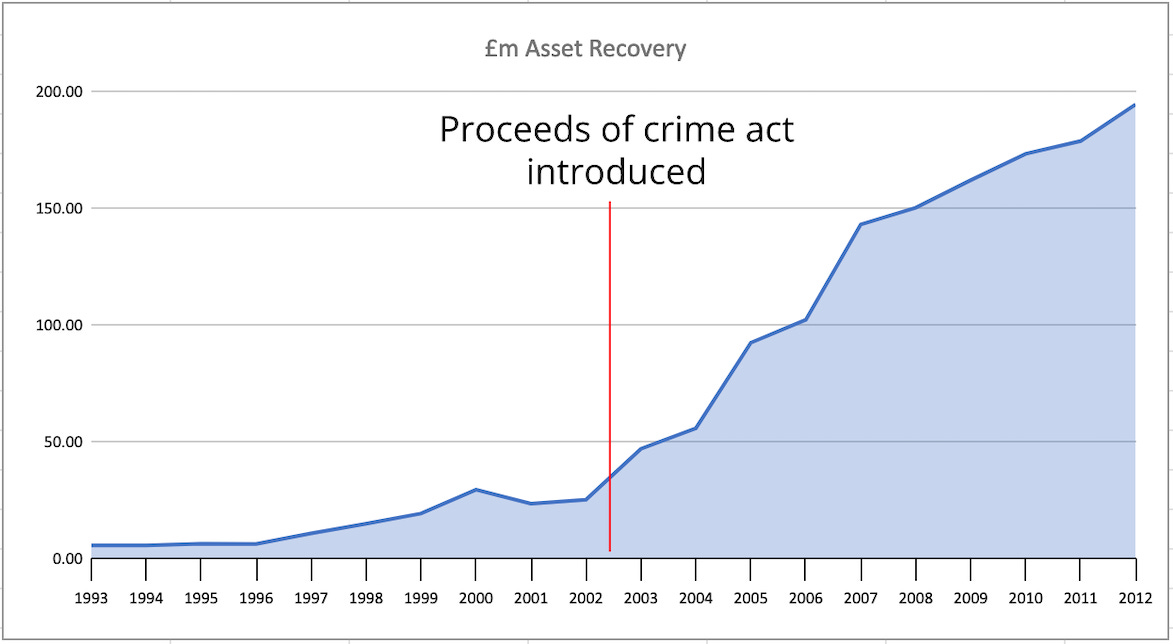POCA was commenced (made operational) on several different days. This short piece explains why the red line separating the old and new regimes for asset recovery in the UK is placed where it is.
The old regime had two methods of asset recovery, an object-based method which allowed the recovery of instrumentalities and a method that allowed the recovery of the proceeds of a specified crime. These were referred to as forfeiture and confiscation respectively.
The new POCA regime retained these two and added three more. Prosecutors could now choose any of the five methods, they had a fistful of powers. The new methods were a non-conviction-based power to recover cash (start date 30th December 2002), a non-conviction-based power to recover assets other than cash (start date March 2003). Additionally, the confiscation recovery method was changed to eliminate significant weaknesses and confiscate assets based on assumptions of general criminality, instead of just a specified crime (start date March 2003).
The confiscation weaknesses that existed before POCA were eliminated. The law had previously allowed offenders to dissipate their criminal assets in three ways: after arrest but before proceedings began; to defending lawyers; and via gifts, typically outside the UK.
On the graph, the start date is shown as April 2002, this is because it is a point graph based on financial year-ends and the UK financial year runs from April to April. The first post-POCA financial year-end was therefore April 2003. You can see that before any of POCA was commenced there is a significant increase in asset recovery results. I attribute this to: dedicated prosecution teams in the CPS and Customs being set up to enforce old confiscation orders (using pre-POCA legislation); some new police POCA cash forfeitures and some police financial investigations into existing cases at the trial stage that led to new confiscation orders. I am open to other views on this detail.
Anecdotally the first POCA cash seizure was by the Heathrow police, in the early hours of 31st December 2002. The second was during business hours the same day outside a bank in central London. Certain police units were keen to be the first to use the power and this enthusiasm at ground–level was to drive the POCA success. I would welcome more precision on these anecdotes!




